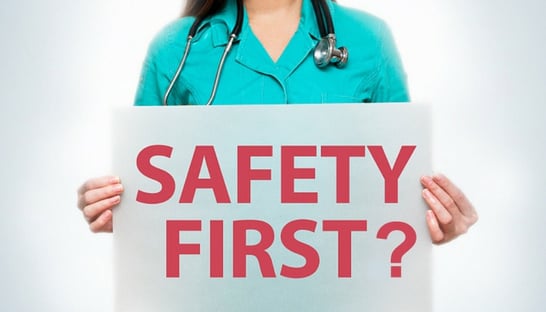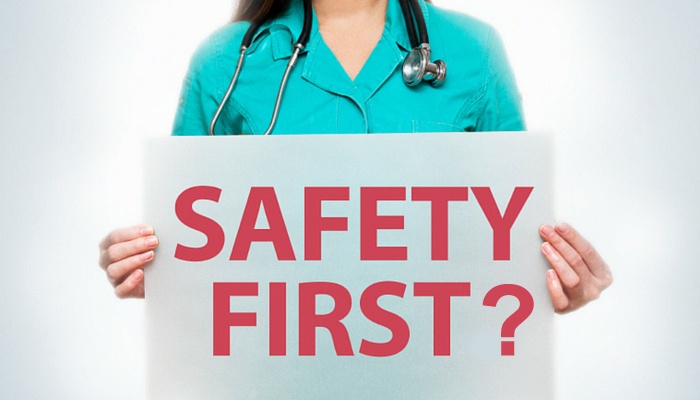 Nurses are a constant presence at the bedside and regularly interact with physicians, pharmacists, families, and all other members of the health care team but, physicians may spend only 30 to 45 minutes a day with even a critically ill hospitalized patient. This means Nurses have the critical role in ensuring a patient's safety.
Nurses are a constant presence at the bedside and regularly interact with physicians, pharmacists, families, and all other members of the health care team but, physicians may spend only 30 to 45 minutes a day with even a critically ill hospitalized patient. This means Nurses have the critical role in ensuring a patient's safety.
Nurses ensure their patient's safety by monitoring them for clinical deterioration, detecting errors, understanding care processes, and performing countless other tasks. There are many ways to help you achieve quality safety for yourself and your patients. Here are a few...
Nurse-to-patient ratios
According to Agency for Healthcare Research and Quality, assigning increasing numbers of patients eventually compromises a Nurses' ability to provide safe care. Several seminal studies have demonstrated the link between Nurse staffing ratios and patient safety, documenting an increased risk of patient safety events, morbidity, and even mortality as the number of patients per Nurse increases. The strength of these data has led several states, beginning with California in 2004, to establish legislatively mandated minimum Nurse-to-patient ratios; in California, acute medical–surgical inpatient units may assign no more than five patients to each registered Nurse.
Safe and healthy workplace
OSHA, which enforces the Occupational and Safety Health Act of 1970, ensures employers are providing a safe and healthy workplace for workers and comply with OSHA’s regulations. Some of the obligations include:
• Complying with your employer’s policies and procedures based on its obligations under OSHA;
• Using personal protective equipment, including masks, when indicated;
• Informing your Nurse manager and others designated in the facility policy of workplace violence (e.g., bullying, intimidation, verbal abuse);
• Using proper body mechanics when lifting, pushing wheelchairs or otherwise working with patients;
• Reducing risks for slips, trips or falls by removing obstacles, wiping up wet walking surfaces and wearing shoes that support your feet and your walking;
• Speaking with your Nurse manager and CNO when policies and procedures governing safety are not being followed.
Overtime and long shifts
It is common for hospitals and clinics to request that their Nursing staff work overtime. While working overtime can be an effective solution to a Nursing shortage, it also can present a number of problems. Nurses risk becoming burned out, tired and/or stressed if they take on too much overtime.
A study conducted by the Pennsylvania Patient Safety Reporting System showed working a 12-hour shift or working overtime was related to having trouble staying awake during the shift, reduced sleep times and nearly three times the risk of making an error. The most common medication errors identified in the study due to Nurse fatigue were wrong doses, dose omission and extra doses.
Communication
Health care teams that communicate effectively and work togehter reduce the potential for error, resulting in an improved clinical performance. According to the American Hospital Association, A key aspect in improving teamwork and communication in health care is engaging patients and families. Increasingly, research shows a correlation between increased patient and family engagement and fewer adverse events. Determining how patients and families want to be involved in their care and then engaging them in designing their plan of care increases their understanding of tests, procedures, and anticipated care outcomes, including a successful discharge.
If you have any questions about patient or staff safety, please click below to ask your question and a Nurse Leader will respond.






